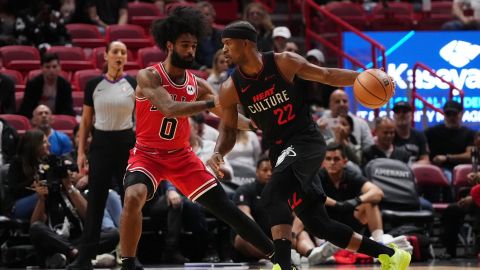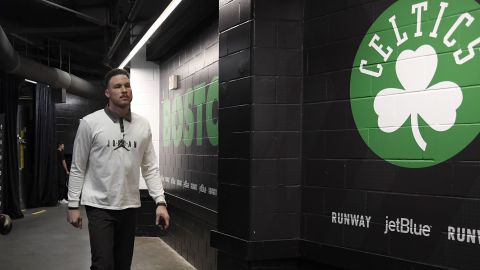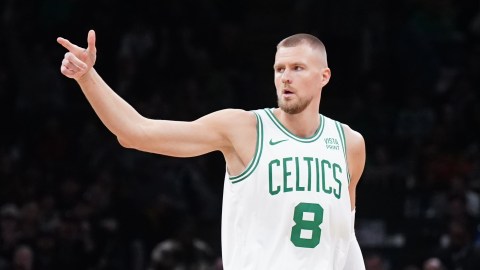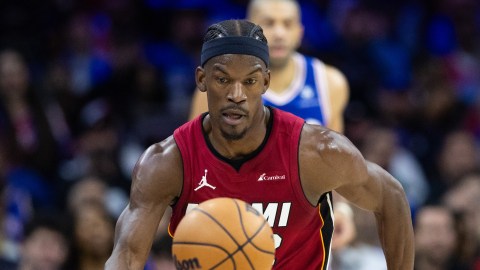 BOSTON — It’s as basic a basketball tenet as there is, repeated in YMCA and CYO gyms daily: Follow your shot.
BOSTON — It’s as basic a basketball tenet as there is, repeated in YMCA and CYO gyms daily: Follow your shot.
Increasingly at the NBA level, however, coaches are giving a very different order: Don’t.
Gradually, the offensive rebound is being abandoned as statistics and studies show that pursuing offensive rebounds can actually lead to easy baskets for the opponent, since every player who crashes the offensive glass is one less player who gets back on defense. Former Boston Celtics coach Doc Rivers admitted all but forsaking the offensive board, even with a pretty good young offensive rebounder in Jared Sullinger on his roster.
Then comes a game like Tuesday’s, in which offensive rebounds nearly enable the Celtics to upset the Indiana Pacers, and the conclusions no longer seem so cut-and-dried.
The Celtics hauled in 20 offensive rebounds, scored 25 second-chance points and outscored the Pacers in the paint 38-36. The result was a 94-83 loss. But the fact that the Celtics were able to pull within one point twice in the final quarter says something about the potential value of following their shots.
“My biggest thing, personally, is you’ve got to balance that well with transition defense,” current Celtics coach Brad Stevens said. “You can’t give up on that. That’s got to be a huge part of what you do. Right now, our transition defense has gotten significantly better in the last two months, and overall been pretty good since (Rajon) Rondo’s been back.”
Of course, lots of offensive rebounds usually mean lots of missed shots. The Celtics had plenty of those Tuesday, when they shot 35 percent. Over the course of the season, however, their offensive rebounding has increased even as their shooting accuracy has improved. They pulled down 13.9 offensive boards per game in January and 12.9 in February. Since the All-Star break, they’re second in the league in offensive rebound percentage, collecting 30.8 percent of available offensive rebounds.
Stevens is about as likely to give out his PIN number as the specifics of his game plan, but it is clear Sullinger in particular has been freed to pursue a few more of his teammates’ errant shots. Among regulars who play at least 10 minutes per game, Sullinger has the fourth-highest offensive rebounding percentage in the league since the All-Star break at 16.4 percent. His number for the season is a slightly more modest 13.2 percent.
The flip side of the argument is right there in the same stats. The top team in offensive rebounding percentage since the break is the Milwaukee Bucks, who have lost eight of their 12 games in that span.
That’s what makes offensive rebounding and transition defense such a delicate balancing act. Do it right, and your team can challenge the Pacers. Do it wrong, and you’re the Bucks. And nobody wants to be the Bucks.
“A lot goes into it,” Stevens said. “You have a plan as far as who goes back automatically on a shot, when somebody’s driving, who takes that place. A lot of people have thoughts on, if you’re above the free-throw line, you’re automatically back, no matter what position you are.
“It all depends on how you do it. Everybody does it a little bit differently, but on the shot, everybody needs to do their job. Then it’s about communicating, and we’re still not as good as we need to be at that, but we are getting better.”
Have a question for Ben Watanabe? Send it to him via Twitter at @BenjeeBallgame or send it here.



